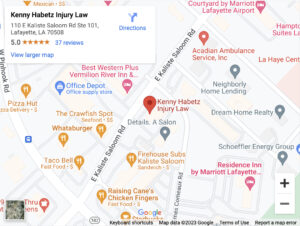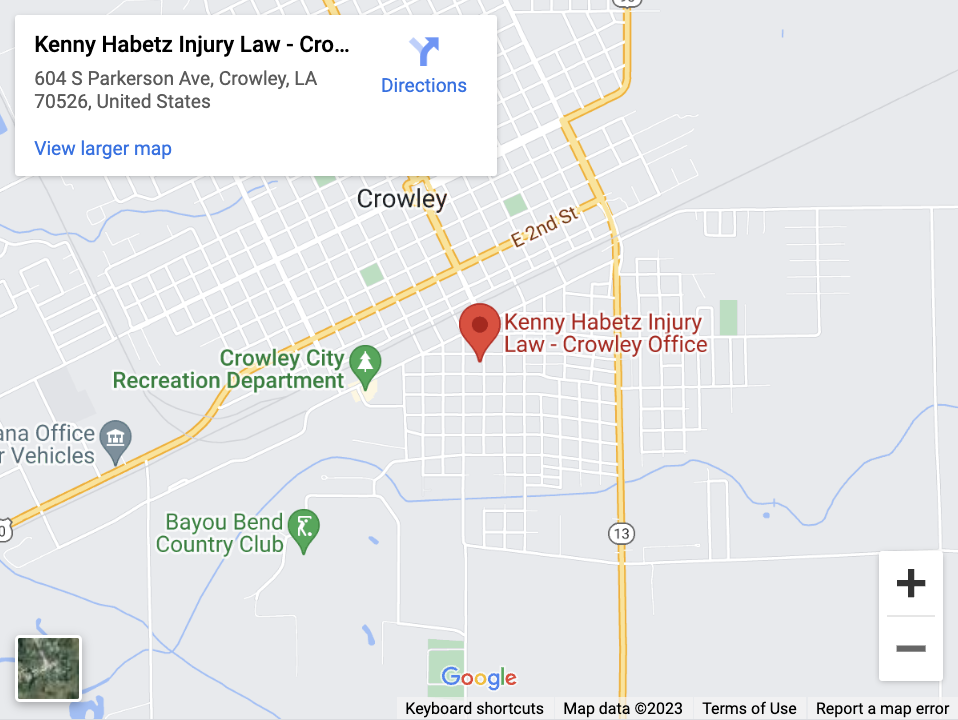
A personal injury accident, such as a car accident, can happen to any person at any time. Many of these accidents are innocuous or merely result in minor inconveniences, but others can result in significant harm and injuries. Unfortunately, many of these accidents are preventable had the at-fault party acted differently at the time.
Tort law allows the injured victim to recover compensation from the at-fault party when the former can prove that the latter was negligent. The legal term negligence means something close to “carelessness,” and it occurs when certain legal elements are met. Read on to learn more about negligence and how to prove it in the context of a personal injury claim.
How To Prove Negligence in a Personal Injury Case

In Lafayette, Louisiana, and throughout most of the rest of the country, there are four legal elements required to prove negligence.
The personal injury victim has the burden of proof to supply evidence in favor of each element.
Each must be asserted by a preponderance of the evidence, meaning it must be the case that each is more likely true than not. These four legal elements are as follows:
Duty of Care
The personal injury victim must establish that the at-fault party owed them a duty of care at the time of the accident. Whether a duty of care exists will depend on the facts of the accident. For example, drivers on the road generally owe a duty of care to other drivers in terms of driving safely and following the rules of the road.
Breach of Duty
Once a duty of care has been asserted, the injured party must prove that the other party’s actions (or inactions) constituted a violation of that duty. Courts commonly invoke the “reasonable person” doctrine in this context, and it will consider how the at-fault party acted versus how a person of reasonable prudence would have acted given the same circumstances. An example where this element is likely met is when a driver runs a red light with no valid reason to do so.
Causation
In a personal injury case, the plaintiff (injured victim) must also establish that the at-fault party’s actions or inactions caused the accident in question. There are two types of causation that must be proven in the negligence context: factual causation and proximate causation.
Factual causation is also sometimes referred to as “but for” causation. If it is the case that but for the at-fault party’s actions or inactions, the accident would not have occurred, factual causation is likely satisfied. Running a red light and then crashing into another vehicle likely meets this requirement.
Proximate causation is in place to ensure that the right kinds of people are held responsible for causing accidents. Consider that technically speaking, but for the at-fault party’s mother giving birth to them, the accident would not have occurred – satisfying the factual causation element.
But we wouldn’t want to hold the at-fault party’s mother liable in that situation, so proximate cause must also be proven. Proximate cause means determining whether it is foreseeable that the at-fault party’s actions would lead to the type of incident in question. So while giving birth to the at-fault driver would not meet this element, using the same example from above, it is foreseeable that running a red light could cause a motor vehicle accident.
Damages
This last element entails proving that the injured party suffered damages as a result of the accident. Generally speaking, it will be required to show that there were financial losses due to the accident. However, through the course of their claim, the personal injury victim can receive compensation for almost every consequence of the accident, such as lost wages, repair bills, pain and suffering, medical expenses, and more.
Special Types of Negligence
The elements described above pertain to a standard negligence claim. Sometimes, however, the injured party can utilize a different type of negligence in order to assert their claim for compensation.
Gross Negligence
Gross negligence occurs when a person acts far outside the scope of how a reasonable person would have acted in the same sort of situation. This type of negligence does not rise to the level of intent, meaning the injured party does not have to prove that the at-fault party intended to harm them. However, gross negligence usually involves either extremely reckless behavior or a wanton disregard for the safety of others. Injured victims might be able to receive more compensation if they can establish that the at-fault party was grossly negligent.
Negligence Per Se
Negligence per se is a concept that can make it easier for the injured victim to prove the liability of the party that caused the accident. Negligence per se specifically occurs when a person violates a safety statute, causing foreseeable harm to a person whom the statute was designed to protect. For instance, violating a speeding law and striking a pedestrian could result in a negligence per se claim.
A Lafayette Personal Injury Lawyer Can Help You With Your Negligence Claim
If you’ve been involved in a personal injury accident, you deserve compensation from the at-fault party. In order to collect that compensation, you will most likely have to establish their negligence. With the help of an experienced Lafayette personal injury attorney, you’ll be well-equipped to do just that.
Schedule a free consultation with our personal injury attorneys at Kenny Habetz Injury Law to discuss the details of your case (337) 399-9000.


